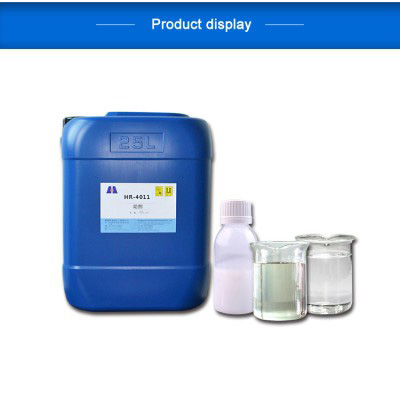Peru What are the Free of silicone defoamers for paints(1)
Peru Selection of antifoaming agents for different applications:
Flat coating
agent
Leveling agents are generally divided into two categories. One type of leveling agent works by adjusting the viscosity and leveling time of the paint film. Most of these leveling agents are organic solvents or mixtures with high boiling points, such as isophorone, diacetone alcohol, Solvesso 150, etc; The other is to adjust the surface properties of the paint film to play a role, and generally speaking, leveling agents refer to this type of leveling agent. This type of leveling agent migrates to the surface of the paint film through limited compatibility, affecting surface properties such as interfacial tension of the paint film, and achieving good leveling of the paint film. Depending on the chemical structure, there are three main types of leveling agents: acrylic acids, organosilicon, and fluorocarbon compounds
varnish
agent
unstable
Features: Low viscosity, low defoaming pressure

Recommendation: Mineral oils or mineral oil modified polyethers
Elastic coating
Features: High viscosity, high Free of silicone defoamers pressure
Recommendation: Polyether modified silicone
Surface coating and film covering adhesive
powder
Recommendation: Polyethers, which can effectively prevent surface defects and have a small impact on gloss
Water in Water Colorful
There is no unified understanding of the mechanism of defoaming agents. According to the mechanism of defoaming agents proposed by predecessors, there are generally the following types: [4]
General defoaming mechanism
Typical defoaming mechanisms with a broad overview are the Robinson defoaming mechanism and the Ross hypothesis. Among them, Robinson mechanism is the basis of Ross hypothesis, which mainly emphasizes the liquid drainage of defoamer destroying foam and Marangoni effect to realize defoaming; The Ross hypothesis is based on the fact that the defoamer particles are insoluble droplets, while some defoamers actually produce defoaming effects in a dissolved state, so the defoaming mechanism of the Ross hypothesis is not comprehensive
Features: More surfactants, stable foam
does
Attenuation mechanism of foam
Under the condition of gravity and pressure difference, the liquid membrane of foam will flow and discharge liquid unevenly, and the gas in the bubble will continue to diffuse and permeate due to the different pressure difference on both sides of the bubble membrane, so the instability of foam itself is mainly reflected from the dynamics. [4]
The attenuation mechanism mainly includes the diffusion of gas through the liquid film and the discharge of liquid from the liquid film. These two properties are inherent attributes of foam itself, and have nothing to do with the existence of surfactant. However, these two attenuation mechanisms only play an obvious role in the initial stage of foam system formation. With the attenuation of foam system, these two effects gradually weaken, making the foam attenuation rate gradually slow. [
Peru Recommendation: Use polyethers or mineral oil to modify polyethers
wear-resistant
Precautions for use of paint Free of silicone defoamers:
Before use, stir thoroughly and mix evenly; Adding the paint while stirring; Before use, it is generally not diluted with water; The dosage should be appropriate. Excessive dosage can cause shrinkage, edge shrinkage, poor brushing performance, and other problems; Too little dosage leads to poor defoaming effect; Add it in two stages, namely, add it in the grinding stage and the paint mixing stage, generally accounting for half of the total amount each time. Use defoaming agents with good foam suppression effect in the grinding stage, and use defoaming agents with good foam breaking effect in the paint mixing stage
